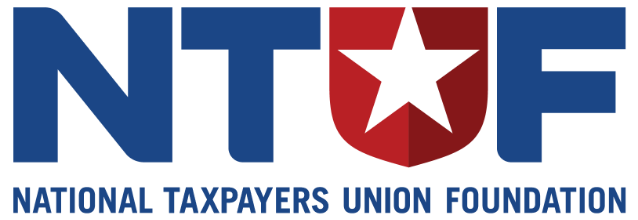Introduction
Gridlock in Washington isn’t just frustrating, it’s expensive. A new analysis from the Congressional Budget Office (CBO), drafted in response to a request from House Budget Committee Chairman Jodey Arrington (R-TX), projects that the ongoing government shutdown will drag down economic growth, resulting in a permanent loss of $7 billion to $14 billion in real GDP. Worse, the longer it continues, the greater the damage will be. In addition, taxpayers are already on the hook for roughly $4 billion in retroactive pay for furloughed federal workers, a cost that will rise by roughly $4 billion for every two weeks the shutdown endures.
Behind the Government Shutdown
The Anti-Deficiency Act prohibits federal agencies from spending money that has not been appropriated by Congress. Lawmakers failed to pass the annual appropriations bills before Fiscal Year 2026 began on October 1. On September 19, the House of Representatives passed a short term continuing resolution (H.R. 5371) that would have kept the government open through November 21, 2025, to allow more time to negotiate a full FY 2026 funding deal.
That measure was blocked in the Senate by Democrats demanding $410 billion in higher spending to extend the enhanced premium tax credits that were temporarily enacted during the pandemic. They also are seeking an additional $539 billion in higher spending from repealing cost-saving reforms that were implemented as part of the One Big Beautiful Bill Act. Their efforts would roll back work requirements for able-bodied adults on Medicaid, reopen an accounting gimmick that allows states to shift more Medicaid costs to federal taxpayers, permit Medicaid enrollees to claim benefits in multiple states, and allow illegal immigrants to access Medicaid.
The resulting funding lapse shuttered much of the federal government. Some employees deemed “essential,” including those involved in law enforcement, military operations, and air traffic control, continue working without pay until Congress restores funding authority. Others are furloughed, though, under the Government Employee Fair Treatment Act of 2019, all federal workers must be retroactively paid once the lapse is resolved.
CBO’s Findings
CBO’s report, Analysis of the Effects of the Government Shutdown on the Economy Under Three Scenarios, outlines potential short- and medium-term consequences of the funding lapse.
CBO projects that the ongoing government shutdown will slow short-term economic growth, with the magnitude depending on how long the funding lapse continues. With the shutdown now lasting about one month, real GDP growth for the fourth quarter of 2025 is projected to be reduced by roughly 1.0 percentage point. If the shutdown extends to six weeks, growth would fall by 1.5 percentage points; an eight-week lapse would reduce it by 2.0 percentage points. Once federal funding resumes, the economy is expected to experience a temporary rebound, with growth in the first quarter of 2026 rising by 1.4, 2.2, and 3.1 percentage points in the respective scenarios as delayed spending and compensation flow back into the economy.
Although much of the lost output will be recovered once the shutdown ends, CBO estimates that between $7 billion and $14 billion (in 2025 dollars) in real GDP will be permanently lost—a figure that will grow the longer the government remains closed. The report explains that this unrecovered output stems from forgone private-sector activity and reduced productivity that cannot be regained once normal operations resume.
There will also be significant costs associated with providing retroactive pay to federal employees furloughed during the shutdown. Using agency contingency plans and data from the Office of Personnel Management, CBO estimates that, on average, roughly 650,000 employees will be furloughed each week, at a cost of about $4 billion to date. If the shutdown continues for another four weeks, that figure could rise to roughly $12 billion. While this compensation is appropriate given that these workers are essentially victims of the political stalemate, it still represents an expense for work that was never performed due to Congress's failure to pass a budget.
Conclusion
Rather than caving to demands for trillions in new spending, Congress should end the shutdown, restore normal government operations, and then turn its focus to reining in deficit spending.
To prevent future disruptions and the needless deadweight loss of taxpayer dollars, lawmakers should also consider the Prevent Government Shutdowns Act, which, before this year, enjoyed bipartisan support in both the House and Senate. This legislation would ensure that, when appropriations bills are not passed on time, federal agencies remain open and funded at existing levels while negotiations continue. Such a reform would keep federal employees working, spare taxpayers the cost of retroactive pay for unproductive downtime, and shield the economy from the ripple effects of repeated shutdowns. Ultimately, it would restore fiscal responsibility and stability to a budgeting process that has too often failed the public it serves.

